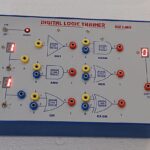Table of Contents
- Discover the Exciting World of Plinko App – Game Features, Tips, and Strategies
- In-Depth Look at Plinko Mechanics
- Understanding the Plinko Board Design
- Levels and Their Unique Challenges
- Maximizing Your Gameplay Experience
- Setting Goals: How to Define Your Winning Strategy
Discover the Exciting World of Plinko App – Game Features, Tips, and Strategies
In the realm of digital entertainment, few alternatives offer as much allure as this captivating chance-based pastime. Players are drawn to its simplicity, yet hidden beneath the surface are layers plinko game of strategy that elevate gameplay beyond mere luck. This interactive experience combines visual appeal with the thrill of uncertainty, making it a favorite among casual gamers and die-hard enthusiasts alike.
Understanding the mechanics is crucial for maximizing enjoyment and potential rewards. Engaging with this activity involves more than randomly dropping balls into a field; it requires keen awareness of angles, timing, and board dynamics. Each round presents unique outcomes that can either lead to impressive wins or unexpected losses, emphasizing the importance of approaching every session with a calculated mindset.
To enhance your performance and increase your chances of success, embracing specific methodologies can be incredibly beneficial. Mastering drop timing and recognizing optimal entry points allows players to harness the power of probability. Additionally, tracking previous outcomes can provide valuable insights, paving the way for more informed decisions in future rounds. By cultivating these techniques, enthusiasts can transform a simple pastime into a rewarding venture, full of excitement and potential triumphs.
In-Depth Look at Plinko Mechanics
Understanding core dynamics of this interactive experience is crucial for effective participation. Here’s a breakdown of essential elements that define gameplay.
- Dropping Mechanism: Each round begins with dropping a token from the top of a vertically oriented board. The angle and position of the drop influence final resting place of the token.
- Peg Layout: Board consists of numerous pegs that alter trajectory of the token. Each peg deflects it randomly left or right, contributing to unpredictability.
- Winning Zones: At the bottom, numerous slots represent various payout levels. The closer a token lands to center slots, greater the rewards, indicating strategic drop points to maximize gains.
- Token Variations: Some versions include different tokens with varying values. Understanding these differences can impact decision-making regarding which token to utilize.
- Gameplay Speed: Rounds can progress quickly, with timing playing an essential role. Players must make rapid decisions to drop tokens effectively, highlighting importance of quick thinking.
Mastery of these components enhances overall performance. Tracking previous rounds’ outcomes provides valuable insights into frequency of certain trajectories, enabling players to adjust strategies based on real-time experiences.
- Observe patterns based on drop locations.
- Analyze peg interactions that influence token movements.
- Adapt to variations in token types for optimizing potential payouts.
- Gauge gameplay tempo to refine decision-making process.
By focusing on mechanics and integrating learned patterns, players can elevate their engagement and increase chances of favorable results in subsequent rounds.
Understanding the Plinko Board Design
The design of a Plinko board significantly influences outcomes and player experiences. Typically, it consists of a vertical surface with an array of pegs arranged in a triangular pattern, creating multiple possible paths for the disk. Each path corresponds to various slots at the bottom where players can win prizes.
Each peg alters the trajectory of a falling disk, introducing randomness. Variations in the layout can affect probabilities of landing in certain slots, making some positions more advantageous than others. Analyzing these configurations can aid players in making informed decisions on where to drop their disks.
Key elements include the size of pegs, spacing between them, and the angle of the board. Closer peg spacing increases complexity and unpredictability, while wider gaps simplify decision-making and outcomes. Ensuring optimal angles can enhance or impede disk travel, ultimately impacting results.
Additionally, players should consider slot values. Higher slots often yield bigger rewards, but they may have lower odds. Balancing risk and reward is crucial when strategizing disk placement. Understanding the board dynamics allows players to refine their approach, adjusting their methods based on the observed behavior of the disks.
Familiarity with board design leads to more strategic gameplay. Regular players can develop insights into patterns emerging from multiple rounds, potentially improving winning chances. Studying the board layout over time equips participants with valuable knowledge to inform their next moves.
Levels and Their Unique Challenges
In this interactive experience, players encounter a variety of levels, each presenting distinct obstacles and conditions that require different approaches. Successfully navigating through these stages can significantly enhance performance and enjoyment.
Initial Stage: The first level is characterized by straightforward mechanics. Few pegs introduce players to fundamental strategies. Focus on understanding the trajectory of drops and timing, as these elements set the groundwork for advanced levels.
Intermediate Levels: As progression continues, complexity increases. Additional pegs and varying drop zones require improved decision-making. Utilize available hints wisely; they can guide you in determining optimal drop points. Experiment with different angles to discern which yield higher rewards.
Advanced Challenges: In higher tiers, players face intricate layouts with moving elements. Here, mastering timing becomes crucial. Observe patterns of movement and anticipate peg responses. Achieving high scores often hinges on quick reflexes and strategic foresight.
Bonus Rounds: Certain levels include bonus opportunities with enhanced payouts. These rounds can introduce unique rules or enhanced multipliers. Pay attention to these variations, as they can significantly boost your overall score. Timing your drops precisely during these instances is essential for maximizing profits.
Final Level: The ultimate challenge tests all skills acquired throughout gameplay. This stage combines all previous elements into one cohesive test. Only those who have mastered the nuances of earlier experiences will succeed. Patience and adaptability become key attributes for winning in this high-pressure environment.
Continually analyze and adjust your strategies based on feedback received in each level. By focusing on the specific requirements that each stage demands, players can optimize their gameplay and enhance their overall experience.
Maximizing Your Gameplay Experience
To enhance enjoyment and increase potential returns, understanding core mechanics is vital. Familiarize yourself with the layout and pin configurations that influence ball movement. Analyze how different paths lead to varying prize values, allowing for more strategic decision-making.
Bankroll management plays an essential role in extending your playtime. Set a specific budget before starting and adhere strictly to it. Divide your total amount into smaller portions to control spending and maintain a steady flow of gameplay, reducing the risk of burnout.
Timing can significantly affect outcomes. Observe patterns in previous rounds; many players report favorable results by waiting for specific intervals before launching. Experiment with different approaches to find what maximizes success rates for you.
Utilizing bonuses and promotions can provide additional opportunities for play without deepening your expenditure. Regularly check for any available incentives that could enhance your balance or increase winnings.
Engaging with fellow players can lead to valuable insights. Participate in community discussions to share experiences and learn from others’ victories and challenges. Peer interaction can also introduce you to innovative tactics previously unexplored.
Lastly, maintaining a level of detachment is crucial. Keeping emotions in check helps avoid impulsive decisions during gameplay. Celebrating small wins is important, but focus should remain on long-term enjoyment rather than short-term outcomes.
Setting Goals: How to Define Your Winning Strategy
Establishing clear objectives is essential for maximizing success in any competitive environment. To create an effective plan, identify specific outcomes you want to achieve. For instance, instead of aiming for “more wins,” consider targeting a defined number of victories within a particular timeframe.
Analyze Previous Performance: Review past results to understand what worked and what didn’t. This analysis will help you pinpoint areas that require improvement and highlight effective approaches that yielded positive outcomes. Keep records of scores, strategies used, and even emotional states during gameplay.
Set SMART Goals: Goals should be Specific, Measurable, Achievable, Relevant, and Time-bound. For example, an objective could be “Increase winning rounds by 25% over the next month.” This format encourages accountability and helps track progress more efficiently.
Develop a Tactical Plan: Break down your overarching objective into smaller, manageable tasks. Create a roadmap that outlines procedures, techniques, and adjustments essential for attaining your defined goals. This method reduces overwhelm and allows for incremental progress.
Embrace Flexibility: Be prepared to adapt your strategies based on ongoing performance and changing circumstances. If certain tactics aren’t yielding desired results, keep an open mind toward experimenting with new approaches. Flexibility can often lead to surprising breakthroughs.
Consistent Review and Adjustment: Schedule regular evaluations of your progress. Reflect on achievements, setbacks, and areas needing refinement. This practice ensures you remain aligned with your objectives and encourages continuous improvement.
By setting precise intentions and systematically working toward them, you cultivate a disciplined approach that enhances overall effectiveness and enjoyment. Success comes from clarity of purpose, thoughtful planning, and the willingness to adapt as necessary.































